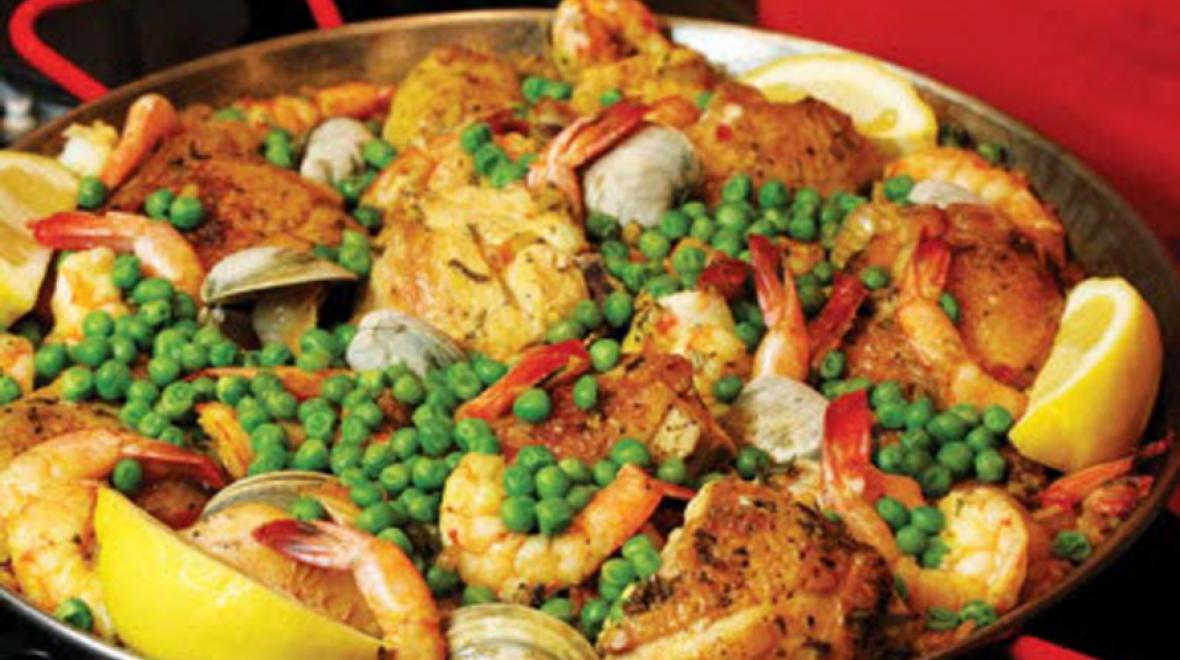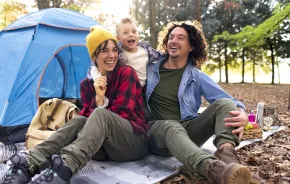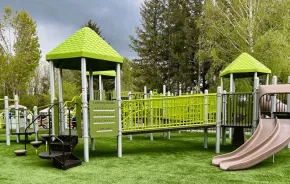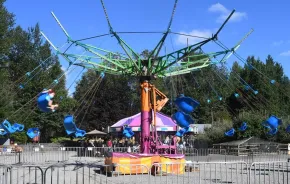
Prior to becoming a parent, I backpacked a fair amount. As a foodie, I spent a lot of time out in nature trying to make the food taste good, nearly killing myself carrying bricks of fabulous cheese and pounds of fresh fruit on my back through various wildernesses.
Now that I have a 4-year-old daughter, I — probably like you — am less interested in bagging peaks and huddling over a tiny stove while getting stalked by bears.
So if the sport is not the thing, what’s left? Well, the food, of course! Car camping has freed me up to do real cooking. But like most people, I don’t want to slave over fancy meals while on vacation. So I’ve found some easy ways to add some foodie spin to our camp meals. If you, too, want to break out of the hot dog/instant oatmeal/Costco cuisine rut this summer, here are my top strategies.
- Camp with friends/family. Camping with another family or with a larger group is not only more fun, but it can lead to better meals. After all, sharing food while car camping — at least the way we do it — is kind of like an extended dinner party. The other adults can help prepare and clean up meals and trade off watching the kids so you get a whine-free walk. Your kids get to play with other kids, which makes everyone happy.
- Plan ahead. Draw up a detailed menu plan with your fellow campers. Alternate responsibility for dinners and breakfasts. Each family can prepare its own lunches and snacks so backpacks stay light for sightseeing. Review your cooking gear list together. Try not to duplicate gear the other family brings, but likewise make sure your collective needs are well met (see “Car Camping Must-Haves” list). For example, bring multiple French presses to ensure a strong flow of coffee in the morning.
- Pack early and use lists. Start packing a few days in advance. Check each item off your car camping packing list and put it in a big plastic storage bin. (See related article, “Foodie Camping Must-Haves”) For food, we use different sizes of plastic lock-top containers. Meat can marinate in them without spilling, and they pack well in the cooler. They also protect delicate items like crackers and fruits, and you can see the contents. Use blue tape to label the containers by meal and day.
- Buy high-quality food. Why bring your “B” game, especially when you’re car camping and have the space to bring the good stuff? A friend of mine says give the kids Hershey’s in their s’mores, but I prefer giving them the artisan chocolate we enjoy. I’m raising a little foodie, after all!
- Bring bacon. Nothing is more important in the food universe than bacon and its smoked-meat cousins. Precook the bacon (I like Hempler’s smoked) in the oven at home. It’ll pack flat, save you a messy cleanup at the camp, and delight everyone. Reheat in foil on the fire grate or camp stove.
- Make ahead. Do the heavy lifting on the meals ahead of time — you’ll get better results and you can relax more at the campsite. Look at your menu and plan to dedicate a day to prepping the food and getting it into containers. It’s more convenient to cut veggies and precook foods like rice and pasta in your own kitchen. And get creative with sides. For example, soba noodles with roasted veggies and sesame sauce does double duty as cooked veggies for the kids and a side dish for dinner.
- Use a real stove. Some foodies like to cook over the fire, but I prefer the control of a gas stove. We bring a two-burner Coleman stove as well as an Iwatani butane-powered stove. The latter is easy to use, light, and powerful. The meat gets cooked on a piece of stone that sits on the stove. It caramelizes the beef in the recipe I include below like nobody’s business. I bought mine at Uwaijimaya. Downside is the disposable cartridges. Upside is portability and ease of use (they’re great at picnics). Make sure your stove works before you pack it. Bring extra fuel.
- Bring LOTS of condiments/sauces. Delicious sauces such as a chimichurri or coconut curry can transform basic foods like chicken-and-veggie kabobs. Because they are separate from the actual food, kids can just opt out. Offer your group an assortment of chutneys, hot sauces, Asian sauces (e.g., black bean), and mustards to guarantee popularity. Include sweeter sauces for the kids, like a maple syrup-based BBQ sauce. Some kids get more adventurous when in the woods, and sauces are a great way to get them hooked.
- Spice it up. Bring interesting spices. For example, the Nepali garam masala I got at World Spice near Pike Market is good on sweet and savory foods, including oatmeal. Try some za’atar (a Middle Eastern blend of sesame seeds, herbs, and salt) on the campfire popcorn. Roasted Spanish paprika is fantastic on everything, but especially makes cheese, potatoes, and corn sing. Similarly, bring a selection of interesting toppings, like toasted pepitas and pine nuts, sautéed onions, roasted red peppers, fried shallots, different types of pickles, etc.
- Go all out. Make at least one special meal to surprise and delight your fellow campers. How about campfire paella, lamb burgers with tapenade and feta, or sesame beef, my personal favorite (recipe below)? Loosen the wallet and throw some cash at your appetizers — artisan cheese, salami, and good-quality olives are always crowd-pleasers. Try some homemade hummus and fresh guacamole on the kids. Because kids get ravenously hungry when camping, this is a good opportunity to try and expand their palates.
- Class it up. Bring a tablecloth (oilcloth is easy to clean), cloth napkins (reusable, won’t blow away), clips to hold the tablecloth down, cloth dishtowels, and a cheap vase. Send the kids out to make a centerpiece or pick flowers. Use real cutlery and real dishes. We found our funky ‘50s plastic ware at a thrift store.
More resources for the campsite gourmet
Want to find more recipes? Still backpacking? Vegetarian? Check out Epicurious and Chowhound. A quick search on the Web for “camping foodie kids” came up with a wealth of great ideas and tips. See my related article, “Foodie Car Camping Must-Haves.”
About the author
Elise Gruber is a former software project manager and SAHM who loves writing about and preparing food. On a trip to Japan, she ate five meals a day and numerous snacks, showing a nearly professional level of dedication to being a foodie. She has found it challenging to cook for a young child, but is optimistic when watching her daughter devour sushi.









